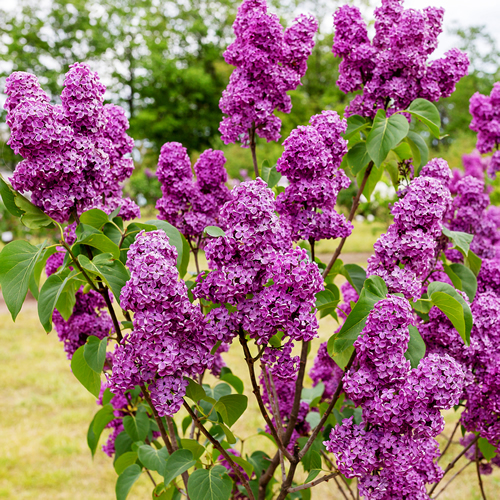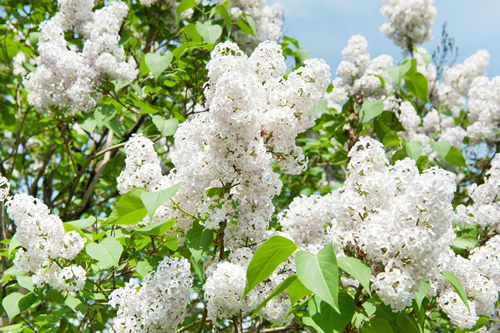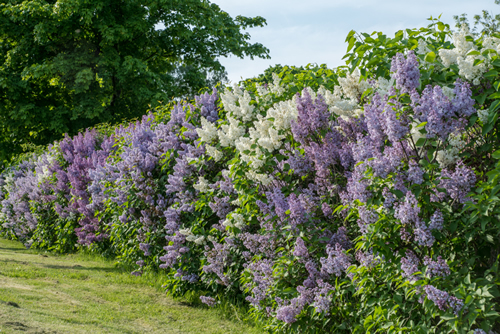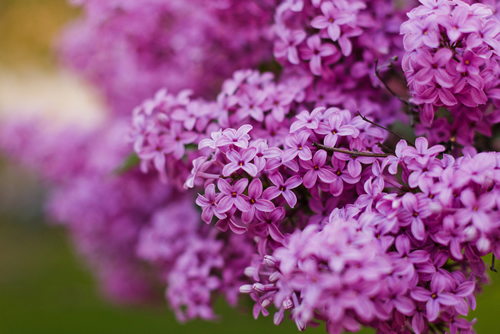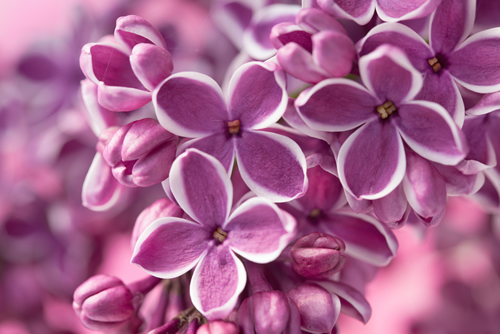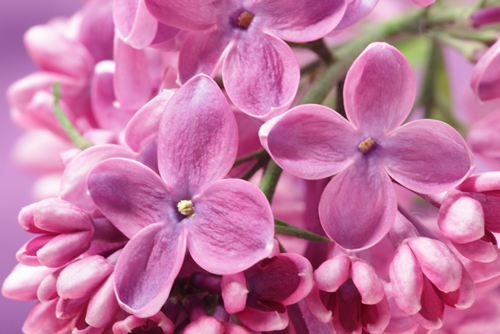How and When to Prune Lilac Bushes
A Complete Guide to Planting and Caring for the Lilac Shrub in the UK
As a gardener, you know how challenging it can be to find the perfect addition to your outdoor space. If you’re looking for an easy-to-care-for shrub that blooms abundantly and is stunningly beautiful all season long, then look no further than the lilac bush! It not only makes a wonderful ornamental statement in any garden setting but also offers a delightful aroma and its deep green foliage provides texture throughout spring, summer, and fall. In this comprehensive guide on planting and caring for the lilac shrub, we will provide detailed tips on everything from water needs and soil conditions to pruning practices—so read on to find out why adding this enchanting flowerbush to your landscape is sure to brighten up any day!
What is the Lilac Shrub and Its Benefits
Lilac shrubs are treasured for their delicate and fragrant blooms, which range in colour from white to pink, purple, and even blue. These hardy plants can be grown in a variety of soils, require little maintenance, and can be trained to take on a formal or informal appearance. The benefits of a lilac shrub extend far beyond its beauty, as its flowers have long been associated with emotional balance, relaxation, and improved cognitive function. Additionally, the essential oils extracted from the flowers have been used for centuries in aromatherapy to alleviate stress, anxiety, and depression. So plant a lilac shrub in your garden and enjoy the stunning display of blooms that will not only add charm to your landscape but also provide therapeutic benefits to your body and mind.
The History of the Lilac Shrub in the UK
The lilac shrub has a fascinating history in the United Kingdom, dating back to the early 16th century when it was first introduced from the Balkan region. Since then, it has become a beloved plant in many British gardens, admired for its delicate purple flowers and sweet fragrance. In the Victorian era, lilac became the symbol of the language of flowers and represented "first love." It's no surprise that the lilac shrub continues to be a popular choice among gardeners and florists alike. Its beauty and history make it a true classic that will never go out of style.
The lilac shrub, known scientifically as Syringa vulgaris, is a fragrant and beautiful northern spring-flowering shrub native to the Balkan Peninsula. Part of the olive family (Oleaceae), this plant has a rich history that extends from Eastern Europe to the gardens of the United Kingdom. This paper aims to explore the journey of the lilac shrub and its influence on the UK's horticultural landscape.
Origins and Traditional Uses Lilacs originated in Eastern Europe and Asia. They were introduced into North America by European settlers, and it's believed they made their way to the UK around the same time. Traditionally, these plants were used for their pleasant scent, beauty, and their potential medicinal properties.
Migration to the UK and Botanical Influences The migration of lilacs to the UK was likely facilitated by the country's similar climate to the plant's native regions. The shrub's ability to adapt to varying soil conditions and its resilience to cold weather might have further contributed to its successful establishment in the UK.
Lilacs have had a significant impact on the UK's botanical landscape, introducing a new genus to the region. Their beautiful spring blossoms and aromatic fragrance have made them a staple in British gardens.
Role in UK Gardening and Landscaping In the UK, lilacs have become a popular choice for gardening and landscaping. Their hardiness, low maintenance requirements, and profuse blooming habits have made them an attractive addition to public parks, private gardens, and landscapes. They are often used as border plants or in clumps for a dramatic spring display.
Socio-cultural Significance Historically, the lilac shrub held a unique place in both aristocratic and common gardens. Its vibrant blossoms were seen as a symbol of love and an emblem of Easter due to its typical blooming period. The lilac's rich, sweet scent made it a popular choice for perfumes and cosmetic products, further increasing its socio-cultural significance.
Current Uses and Commercial Applications Today, the lilac shrub continues to be a popular choice for landscaping in the UK. It's also used commercially; the flowers are harvested for use in perfumes, soaps, and other cosmetic products. Lilacs are also often included in flower arrangements and bouquets due to their attractive blossoms and pleasant fragrance.
The lilac shrub's journey from the Balkan Peninsula to the gardens of the UK is a testament to its adaptability and appeal. Its influence on the UK's horticultural landscape is undeniable, and its socio-cultural significance has only grown with time. As we continue to appreciate and utilise this beautiful plant, we contribute to the ongoing history of the lilac shrub in the UK.
A Complete Guide to Planting and Caring for the Lilac Shrub
What are the Characteristics and Difference Between the Lilac Shrub, Lilac Bush and the Lilac Tree
Lilacs are known for their stunning, fragrant blooms that bring joy to any garden or landscape. However, with so many varieties of lilacs available, it can be difficult to differentiate between them. The three most commonly known types of lilacs are the lilac shrub, lilac bush, and lilac tree.
The main difference between them lies in their size and growth habits.
Lilac shrubs are the smallest of the three and typically grow up to 6 feet tall.
Lilac bushes can grow up to 12 feet tall and are known for their dense foliage and profuse blooms.
Lilac trees, on the other hand, can grow up to 30 feet tall and have a more structured, upright growth pattern.
Despite their differences in size, all three types of lilacs share similar characteristics such as heart-shaped leaves and clusters of fragrant flowers in shades of pink, purple, and white.
The terms "shrub", "bush", and "tree" often confuse gardeners as they can refer to growth habit or size rather than distinct species or varieties of plants. In the case of lilacs (Syringa vulgaris), they generally refer to different sizes and shapes of the same species. Here's a comparison guide:
-
1. Lilac Shrub
- This is typically a smaller form of lilac that grows to around 5-8 feet in height. They prefer full sun to partial shade and well-drained soil. Watering requirements are moderate, needing consistent moisture but not tolerating waterlogged conditions. The flowers are usually purple or white, with a strong, sweet scent. The foliage is heart-shaped with a smooth texture.
- Care Tips: Regular pruning after flowering helps maintain a compact shape. Fertilize annually in early spring to boost flower production.
-
2. Lilac Bush
- Lilac bushes are larger, typically reaching heights of 10-15 feet. They have similar environmental and watering requirements as lilac shrubs. The flowers are also similar in color range and scent but may be larger and more abundant due to the bush's size. The leaves share the same characteristics.
- Care Tips: Prune immediately after flowering to avoid removing next year's blooms. Monitor for pests like borers and treat as needed.
-
3. Lilac Tree
- Lilac trees, or standard lilacs, are trained into a tree form, reaching heights of up to 15-25 feet. They need full sun and well-drained soil. Watering needs are moderate, similar to shrubs and bushes. The flowers can be a wider range of colors, including pink and blue, and retain the signature lilac fragrance. Their leaves are the same as those of lilac shrubs and bushes.
- Care Tips: When pruning, maintain the tree shape by removing lower branches. Stake young trees to provide support.
It's important to note that the care for all these forms of lilac plants is relatively similar and straightforward. They all require a well-draining soil, moderate watering and should be pruned just after flowering. All lilacs are known for their intoxicating fragrance and beautiful spring blooms, making them a popular choice among gardeners.
In summary, the differences between lilac shrubs, bushes, and trees primarily lie in their size and shape. Regardless of which one you choose to add to your garden, proper care will ensure they provide many years of beauty and enjoyment.
Choosing the Right Location for Your Lilac Shrub
When it comes to planting a lilac shrub, choosing the right location is crucial for its growth and overall health. These beautiful shrubs thrive in bright, sunny locations with well-draining soil. It's important to avoid planting them in areas with too much shade or damp soil, as this can stunt their growth and cause issues with disease. As you consider the location, keep in mind the size of the shrub when full grown and make sure there is plenty of space for it to spread out. With the right location and proper care, a lilac shrub can brighten up any yard with its stunning blooms and delightful fragrance.
The size of lilac shrubs can vary depending on the specific variety and growing conditions. In general, lilac shrubs can grow to be 5-15 feet (1.5-4.6 meters) wide at maturity. However, some varieties can spread as much as 20 feet (6 meters) wide if left unpruned. It's important to research the specific variety of lilac shrub you have and its mature size to ensure proper spacing and care for the plant.
Preparing the Soil for Planting Your Lilac Shrub
Before planting your lilac shrub, it is important to prepare the soil properly. Lilac shrubs prefer well-draining soil that is slightly acidic.
Start by clearing away any weeds or debris from the planting area.
Dig up the soil to a depth of at least 12 inches and mix in compost or aged manure to improve its fertility and texture.
You can also add some sand or peat moss to increase drainage if necessary. Make sure the soil is level and then water it thoroughly to settle it in.
This will create the perfect growing conditions for your lilac shrub and ensure it thrives for years to come.
Planting Your Lilac Shrub
Planting a lilac shrub in your garden can be a great way to add some fragrance and beauty to your outdoor space. While it may seem daunting at first, with the right tools and techniques, planting your lilac shrub can be a fun and rewarding experience.
Start by choosing a sunny spot in your garden with well-draining soil.
Dig a hole twice the size of the root ball and add some organic matter to the hole.
Gently loosen the roots of your lilac shrub and place it into the hole.
Backfill with soil, water well, and add a layer of mulch to help retain moisture. With proper care and attention, your lilac shrub will thrive and provide you with stunning blooms year after year.
Here is a comprehensive step-by-step guide on how to grow and plant Lilac as a hedge:
Materials Needed:
- Lilac shrubs (quantity and variety depends on the planned size and shape of the hedge)
- Garden spade or shovel
- Garden rake
- Compost or aged manure
- Garden hose or watering can
- Mulch (optional)
Steps:
- Choose the Right Location: Select a location that receives full sun for at least six hours per day and has well-draining soil. Lilacs prefer slightly acidic soil with a pH between 6.0 and 7.0. Avoid planting in areas that are prone to waterlogging as this can lead to Root Rot.
- Prepare the Soil: Use a garden spade or shovel to dig a trench that is at least 2 feet wide and 1 foot deep. Make sure that the soil is loose and friable. Add compost or aged manure to the soil to improve its quality and mix it thoroughly.
- Space the Shrubs: Space Lilac shrubs about 4 to 6 feet apart, depending on the variety and the desired density of the hedge. Plant shrubs in a straight line to create a hedge, using stakes and a string line to ensure straight rows.
- Plant the Shrubs: Dig a hole that is slightly larger than the root ball of the Lilac shrub. Place the shrub in the hole and backfill with soil, taking care not to bury the stems deeper than they were planted in their previous location. Firm the soil around the shrub to provide good contact with the roots.
- Water the Shrubs: Water the shrubs thoroughly immediately after planting and regularly for the first season. The soil should be evenly moist, but not saturated.
- Mulch the Shrubs: Apply a layer of organic mulch around the base of the shrubs to conserve moisture and suppress weeds. Leave a gap between the mulch and the base of the shrubs to prevent moisture buildup.
- Prune: Prune the shrubs every year after flowering to maintain the desired height and shape of the hedge. Remove any dead, damaged, or diseased wood and thin out crowded stems to encourage airflow and sun exposure.
By following these steps, you can successfully grow and plant Lilac as a beautiful and fragrant hedge. Remember to maintain regular watering and pruning to keep the hedge healthy and looking its best, and to use organic fertilizers and pest control methods to protect the environment.
Caring for Your Lilac Shrub
Few things are more enchanting than the sweet scent of lilacs blooming in the springtime. If you're lucky enough to have a lilac shrub in your garden, it's important to provide it with the proper care it deserves to thrive.
First and foremost, lilacs require plenty of sunlight to grow healthy and strong. These beautiful plants also need to be pruned regularly during their dormant season to promote new growth and maintain their shape.
Additionally, it's crucial to keep the soil around the shrub well-drained, as lilacs are susceptible to Root Rot. With a few simple steps, you can ensure that your lilac shrub remains healthy and vibrant, providing you with stunning blooms and a delightful fragrance year after year.
Common Problems with the Lilac Shrub
The Lilac Shrub is a beautiful addition to any garden with its stunning flowers and charming fragrance. However, like all plants, it can encounter its fair share of problems. Despite being relatively low maintenance, Lilac Shrubs are prone to certain issues such as fungus, pests, and diseases. Fungal infections, for example, can cause discoloration and wilting of the leaves, while pests like Aphids and Spider Mites can suck sap from the plant, leaving it weakened and vulnerable to disease. Fortunately, with the right care and attention, most of these issues can be prevented or managed effectively, ensuring that your Lilac Shrub remains a thriving and delightful feature of your garden all year round.
Here is a list of pests and diseases that can affect the Lilac shrub:
Pests:
- Lilac borer: This insect pest lays eggs on the bark of the Lilac plant, and the larvae bore into the wood, causing damage to the plant's vascular system.
- scale insects: These small, armored pests attach themselves to the bark of the Lilac plant and feed on the sap. They can cause yellowing and wilting of the leaves and stunt the growth of the plant.
- Leaf Miners: These pests lay eggs on the leaves of the Lilac shrub, and the larvae tunnel through the leaves, causing unsightly brown patches and curling of the leaves.
- Spider Mites: These pests are very small and can cause damage to the leaves of the Lilac plant by sucking the sap from the plant.
- Aphids: These small insects can congregate in large numbers on the leaves of the Lilac plant, and their feeding can cause curling, yellowing and stunting of the leaves.
Diseases:
- Powdery Mildew: This fungal disease can affect the leaves, stems, and flowers of the Lilac plant, causing a white, powdery coating on the surface of the plant.
- Bacterial blight: This disease causes Black Spots on the leaves, stem and flowers of the Lilac plant. It can also cause wilting and death of the plant tissue.
- Verticillium Wilt: This fungal disease affects the plant's vascular system, causing wilt and eventual death of the plant.
- Phytophthora Root Rot: This fungal disease affects the roots of the Lilac plant and can cause yellowing, wilting and death of the plant.
- Cercospora Leaf Spot: This fungal disease causes purple spots on the leaves of the Lilac plant and can lead to defoliation and stunted growth.
By recognizing and monitoring these potential pests and diseases that can affect the Lilac shrub, you can take action to prevent, manage and treat any issues that may arise.
Why are my lilacs not flowering in the UK?
As a UK resident, you may have some trouble getting your lilacs to bloom every year. Lilacs are a beautiful addition to any garden, but if they aren't producing the flowers that you were expecting, there could be a number of factors at play.
It's important to assess the amount of light and water your plants are receiving, as well as the soil quality and any potential pests or diseases that could be damaging your lilac bushes. With some careful attention and upkeep, you can help your lilacs flourish and bring a burst of colour to your outdoor space.
How big does a lilac bush get?
The sight of lilacs blooming in the springtime is truly magical, and many homeowners dream of having a beautiful lilac bush in their yard. But one question that often arises is: how big does a lilac bush get? Well, the answer depends on the species and the growing conditions. Some lilacs can reach heights of up to 20 feet, while others stay compact and stay under 5 feet. No matter what size your lilac bush grows to, its sweet fragrance and beautiful flowers will make it an enchanting addition to your outdoor space. So go ahead and plant that lilac, and watch it flourish into a stunningly aromatic masterpiece.
Lilac shrubs are the smallest of the three and typically grow up to 6 feet tall.
Lilac bushes can grow up to 12 feet tall and are known for their dense foliage and profuse blooms.
Lilac trees, on the other hand, can grow up to 30 feet tall and have a more structured, upright growth pattern.
Creating a lilac hedge can be a beautiful addition to any backyard, but careful planning is required to ensure the plants grow properly and create a full, healthy hedge.
The spacing between each lilac bush will depend on the variety chosen, as different types of lilacs have different mature sizes. For example, if you're using common lilacs (Syringa vulgaris), which can grow to be 10-15 feet wide at maturity, you'll want to space each plant about 8-12 feet apart. This allows enough room for each plant to grow without competing for resources, yet close enough to form a continuous hedge.
If the hedge will be grown in multiple rows, adjust the spacing to ensure all plants receive adequate sunlight and air circulation. Stagger the plants in the second row so they are not directly behind the plants in the first row.
How quickly do lilac bushes grow?
Lilac bushes are a delightful addition to any garden or landscape with their lovely blooms and sweet fragrance. If you're thinking about planting a lilac bush, you might be wondering just how quickly it will grow. Well, the answer can vary depending on a few different factors. The variety of lilac bush you choose, the climate in your area, and the care you give your plant can all affect its growth rate. Some lilac bushes can grow up to two feet per year, while others may only grow a few inches. With proper care and attention, however, you can expect your lilac bush to thrive and provide you with beautiful blooms for many years to come.
The Different Varieties of the Lilac Shrub
The lilac shrub is a beautiful and versatile plant that comes in a variety of colours and sizes to suit any garden. From the classic purple lilac to the delicate white or pink varieties, each type of lilac has its own unique charm. Some lilacs have fragrant blossoms that are perfect for adding a sweet scent to your garden, while others have larger or more abundant flowers that make a real statement. With so many different types of lilac to choose from, it's easy to find one that will fit perfectly into your landscape design. Whether you want a showy focal point or a subtle accent, the lilac is a wonderful choice for any gardener.
Here is a comprehensive list of some Lilac shrub varieties, along with their growing habits and characteristics:
- Common Lilac (Syringa vulgaris): This is a deciduous shrub that typically grows up to 20 feet (6 meters) tall and 20 feet (6 meters) wide. It has fragrant, purple, pink or white flowers and upright growth habit.
- Persian Lilac (Syringa x persica): This is a smaller shrub that typically grows up to 8-10 feet (2.4-3 meters) tall and wide. It has fragrant purple flowers and a spreading growth habit.
- Dwarf Korean Lilac (Syringa meyeri 'Palibin'): This is a rounded shrub that typically grows up to 4-5 feet (1.2-1.5 meters) tall and wide. It has fragrant, pale purple, or white flowers and produces little to no suckers.
- Japanese Tree Lilac (Syringa reticulata): This is a small tree or large shrub that typically grows up to 20-30 feet (6-9 meters) tall and 15-25 feet (4.5-7.5 meters) wide. It has fragrant, creamy white flowers and an upright, spreading growth habit.
- Miss Kim Lilac (Syringa patula 'Miss Kim'): This is a smaller shrub that typically grows up to 6-7 feet (1.8-2.1 meters) tall and wide. It has fragrant, lavender-blue flowers and a rounded growth habit.
- Bloomerang Lilac (Syringa x 'Bloomerang'): This is a shrub with a compact, mounded growth habit that typically grows up to 4-6 feet (1.2-1.8 meters) tall and wide. It has fragrant, purple flowers that bloom in the spring and again in the summer.
- Chinese Lilac (Syringa x chinensis): This is a shrub that typically grows up to 10-15 feet (3-4.5 meters) tall and 10-12 feet (3-3.6 meters) wide. It has fragrant, pink to purple flowers and a spreading growth habit.
- Tinkerbelle Lilac (Syringa x 'Bailbelle'): This is a compact, mounded shrub that typically grows up to 4-5 feet (1.2-1.5 meters) tall and wide. It has fragrant, pinkish-lavender flowers and a dense growth habit.
- Yankee Doodle Lilac (Syringa x 'Yankee Doodle'): This is a shrub that typically grows up to 10 feet (3 meters) tall and 8 feet (2.4 meters) wide. It has fragrant, reddish-purple flowers and an upright habit.
By understanding the different varieties of Lilac shrubs and their unique characteristics, you can choose the best one for your garden needs. Remember to research the specific variety of Lilac shrub you are planting to understand its potential growth size and care requirements.
How to Propagate the Lilac
Lilac bushes have been a favorite of gardeners for centuries due to their showy, fragrant blooms. If you want to expand your lilac garden or share the beauty of the blooming bushes with friends and family, take note of some tips on propagating lilacs.
One of the most popular methods is taking a cutting from an existing lilac bush and planting it in fertile, well-draining soil.
Another way to propagate is through layering, a technique where a branch is bent to the ground and covered with soil until roots form.
Whatever method you choose, patience is key as it takes a few years for the new lilac plant to mature and bloom. By learning how to propagate lilacs, you can enjoy the sweet scent and stunning flowers for years to come.
Here is a comprehensive step-by-step guide on how to propagate the Lilac shrub from a softwood cutting:
Materials Needed:
- Pruning shears
- Rooting hormone powder
- Potting mix
- Small container or nursery pot
- Clear plastic bag
- Spray bottle
- Gloves
Steps:
- Timing: Take the softwood cutting in the early summer when the plant is growing actively. Look for new, green growth on the Lilac plant that is about 4-6 inches (10-15 cm) long.
- Cut the Stem: Use pruning shears to take a softwood cutting from the Lilac plant. Cut off the stem on a 45-degree angle just below a set of leaves. Remove any flowers or buds and make sure the cutting has several sets of leaves.
- Dip in Rooting Hormone: Dip the cut end of the Lilac cutting into a container of rooting hormone powder to encourage root development. Potting Mix: Fill a small container or nursery pot with a well-draining potting mix.
- Insert Cutting: Create a hole in the potting mix with your finger or pencil and insert the cut end of the Lilac cutting into the mix. Firmly press the soil around the base of the cutting to hold it in place.
- Mist the Cutting: Gently mist the cutting with water using a spray bottle. Cover the pot or container with a clear plastic bag to create a mini greenhouse effect.
- Check and Maintain: Check the cutting regularly to ensure the soil remains moist, but not overly wet. Condensation on the inside of the bag is a good sign that the cutting is getting the moisture it needs.
- Transplant: Once the cutting has rooted and grown to about 6-8 inches (15-20 cm) tall, it can be transplanted into a larger pot or planted directly into the garden.
- Be Patient: It may take up to 6 to 8 weeks for roots to form, so be patient and continue to maintain the proper growing conditions until the Lilac cutting has established itself.
By following these steps, you can propagate the Lilac shrub from a softwood cutting and enjoy the benefits of having a new plant in your garden. Remember to keep the cutting in a warm, bright location, and be careful not to disturb the roots when transplanting to their permanent position.
How to Propagate the Lilac Bush using the Layering Technique
Lilacs are beautiful, fragrant flowers that are often used to line fences or add colour to gardens. If you have a lilac bush that you would like to propagate, layering is one of the easiest techniques to use. This method involves bending a branch of the lilac bush and burying the tip in the soil, allowing it to take root and form a new plant. Follow these simple steps to propagate your own lilac bush using the layering technique.
Step 1: Select the Branch
Identify a healthy, flexible branch on your lilac bush that is still attached to the main plant. The branch should be at least a year old and free of any diseases or pests.
Step 2: Bend the Branch
Using a pruning saw or sharp garden scissors, make a shallow cut on the underside of the branch, about 6 inches from the tip. Gently bend the branch down to the ground, making sure the cut section is touching the soil.
Step 3: Secure the Branch
Hold the bent branch in place with a stake or rock, making sure it doesn't spring back up. Cover the cut section of the branch with soil, leaving the tip exposed.
Step 4: Water and Wait
Water the soil around the bent branch thoroughly, making sure it stays moist. Check on the branch regularly to make sure it hasn't sprung back up and that the soil is still moist. Within a few weeks, you should start to see new growth at the tip of the branch.
Step 5: Cut the New Plant
Once the new plant has taken root, which should take around a year or so, it can be cut free from the parent plant. Use a sharp pair of garden scissors to cut the new plant away from the parent plant, leaving a few inches of stem attached to the new plant.
Step 6: Transplant the New Plant
Dig a hole in the soil to transplant the new lilac bush. Make sure the hole is deep enough to allow the root system to spread and water the soil around the new plant thoroughly.
Propagating a lilac bush using the layering technique is a simple process that doesn't require any special equipment or expertise. Follow these six steps and soon you'll have a new lilac bush to enjoy in your garden.
Do lilac trees smell like lavender?
Lilac trees are a beautiful addition to any garden or landscape with their stunning clusters of fragrant flowers in shades of purple, pink, and white. However, it is a common misconception that lilac trees smell like lavender. While both plants belong to the same family, they have distinct fragrances. Lavender has a more herbaceous and medicinal smell, whereas lilacs have a strong yet subtle floral scent. The best way to describe the aroma of lilac trees is a blend of sweetness and freshness with a hint of spice. So, if you're searching for a calming and soothing fragrance for your home or garden, lavender and lilac are both excellent choices, but just remember that they are not the same.
In conclusion, lilacs bring a fragrant beauty to the garden that is unrivaled. They are easy to care for and can bring an array of hues to any garden. The Lilac Shrub is a hardy bush with many varieties, but they are also offered in sturdy Lilac Trees or bushy Lilac Bushes. It thrives best when planted in soils that retain moisture yet have good drainage and plenty of sunshine. Although you must be more vigilant during dry summer seasons, if cared for properly your lilac will live almost indefinitely and will thrive year after year. Your friends and family will enjoy the sweet smell of this bush throughout each spring season and you’ll always be grateful you chose to add a lilac to your garden!
A Complete Guide to Pruning the Lilac Shrub in the UK
If you are looking for a fragrant, low-maintenance garden staple, then the lilac shrub is the perfect choice. They bloom profusely in late spring and provide relief from drab and dull gardens all year round. If you live in the UK, pruning your lilac bush can not only ensure blooms every year but can also help it maintain its shape and size while producing healthy foliage. In this comprehensive guide, we will walk you through every step of how to properly prune a lilac bush in the UK so that your garden remains full of beautiful and luscious blooms for years to come!
Understand the Basics of Pruning Lilacs in the UK - When, How and Why
Lilacs are a common sight in many gardens across the UK, but they require proper care to bloom and stay healthy. One important aspect of this care is pruning. Knowing when, how, and why to prune your lilacs can make a big difference in the health and appearance of your plants. Pruning at the wrong time or using the wrong method can result in stunted growth or even damage to the plant. With a bit of knowledge and care, however, you can keep your lilacs looking and smelling beautiful year after year. So why not take some time to understand the basics of pruning lilacs in the UK? Your garden will thank you for it.
Selecting the Right Tools for Pruning - Shears, Loppers, and Pruners
Proper pruning is essential to the health and beauty of your plants. However, selecting the right tools for the job can be overwhelming. Shears, loppers, and pruners all have different uses and benefits. Shears are great for shaping hedges and trimming small shrubs. Loppers are designed for cutting larger branches and limbs. Pruners are perfect for precise and delicate cuts on small plants. When selecting the right tool for your pruning task, it's important to consider the size and type of plant you will be working with. Investing in high-quality tools can also make a huge difference in the efficiency and effectiveness of your pruning.
Prepare the Shrub for Pruning by Removing Dead or Diseased Branches
As any avid gardener knows, pruning is a necessary task to keep your shrubs looking healthy and well-manicured. However, before you even begin the process, it's important to thoroughly prepare your shrub. One of the most crucial steps in this preparation is to remove any dead or diseased branches. By doing so, you not only create a cleaner appearance for your shrub, but you also promote growth and prevent the spread of any potential diseases. With a little bit of TLC and some careful attention to your pruning practices, your shrub will be the envy of your neighbors in no time!
Identify and Cut Back Any Crossed or Rubbing Branches To Ensure Healthy Growth
To ensure healthy growth of your trees or plants, it's important to identify and cut back any crossed or rubbing branches. These types of branches can cause damage to the tree, leading to stunted growth, disease, and even death. By carefully pruning and removing these problematic branches, you can promote healthy growth and ensure that your plants stay strong, vibrant, and beautiful. So take a moment to inspect your trees and plants for any crossed or rubbing branches, and don't hesitate to trim them back as needed. Your plants will thank you for it!
Thinning Out Overgrown Branches to Allow For Better Air Circulation and Sunlight Penetration
Have you noticed that some of the branches on your trees are looking a little too overgrown? It might be time to thin them out. Not only will this improve the aesthetic of your tree, but it will also allow for better air circulation and sunlight penetration. This can be particularly important for fruit-bearing trees, as adequate sunlight and air flow can increase the yield and quality of the fruit. Don't be afraid to prune away those overgrown branches and give your tree the opportunity to thrive.
Trimming Long and Leggy Branches To Encourage Growth of New Side Shoots
As any gardener knows, maintaining healthy and strong plants requires diligent care and attention. One important aspect of this is trimming long and leggy branches to encourage the growth of new side shoots. While it may seem counterintuitive to cut away parts of a plant in order to promote its growth, doing so can actually have a significant impact on its health and appearance. By removing overgrown branches, you allow sunlight and air to reach the lower areas of the plant, stimulating new growth and ensuring a more even distribution of nutrients. Plus, with careful pruning, you can help shape your plants into the desired form, creating a beautiful and thriving addition to your garden.
Here is a comprehensive step-by-step guide on how to prune the Lilac:
Materials Needed:
- Clean, sharp pruning shears
- Loppers (for older, thicker stems)
- Gloves
- Disinfectant spray or rubbing alcohol
Steps:
- Timing: It's important to prune Lilacs at the right time to ensure proper growth and flowering. Prune as soon as the flowers have wilted and the plant is no longer in bloom. Do not wait too long or prune in the fall, as this can impact the following year's growth and flowering.
- Remove Dead Wood: Start by inspecting the Lilac for any dead, damaged or diseased wood. Cut back all dead wood to just above the base of the stem, taking care not to damage any healthy wood.
- Thin Out The Stems: Look for any crowded, crossing or rubbing stems that can impact the circulation of air and light throughout the plant. Cut back the entire stem to the base or where it branches off from another stem.
- Create Airflow: Take out any thin or weak stems to create more airflow and allow more sunlight to reach the interior parts of the plant. This will reduce the risk of pests and diseases. Cut back the entire stem to the base or where it branches off from another stem.
- Remove Any Suckers: Lilacs can produce suckers from the base of the plant. Look for these and remove them with pruning shears or by pulling them out by hand.
- Maintain the Shape and Size: Depending on your desired size and shape of the Lilac bush, cut back the side shoots to two or three buds on each stem. This will encourage them to grow and flower in the next season. Cut back any remaining shoots to about one-third of their original length.
- Disinfect After Pruning: After pruning, disinfect your pruning shears and loppers to avoid the risk of transmitting any plant diseases to other plants. Spray or soak the blades in disinfectant or rubbing alcohol before and after every use.
Pruning your Lilacs annually after flowering is important to maintain the health, shape, and size of the plant. By following these steps, you can help ensure that your Lilacs continue to grow and bloom beautifully year after year.
What month do you prune lilac bushes?
Lilac bushes bring vibrant colour and gorgeous fragrance to any garden. But in order to maintain their beauty and health, it's important to know when to prune them. While lilac bushes can technically be pruned at any time of the year, the best time to do so is typically in late spring or early summer, after they have finished blooming. This not only ensures that they will continue to bloom beautifully in the future, but it also helps maintain their shape and size. So, mark your calendars for next spring and give your lilac bushes the care they deserve.
Lilac bushes are a beautiful addition to any garden, but to keep them looking their best, they require pruning. If you're wondering when the best time to prune your lilac bushes is, the answer is simple: late winter or early spring.
This is the time when the bushes are still dormant and have not yet begun to develop new leaves or flowers for the season. Pruning during this time ensures that you won't interrupt the blooming cycle or damage any new growth.
So, mark your calendar and get ready to give your lilac bushes a much-needed trim just in time for spring!
How far can you cut back a lilac bush?
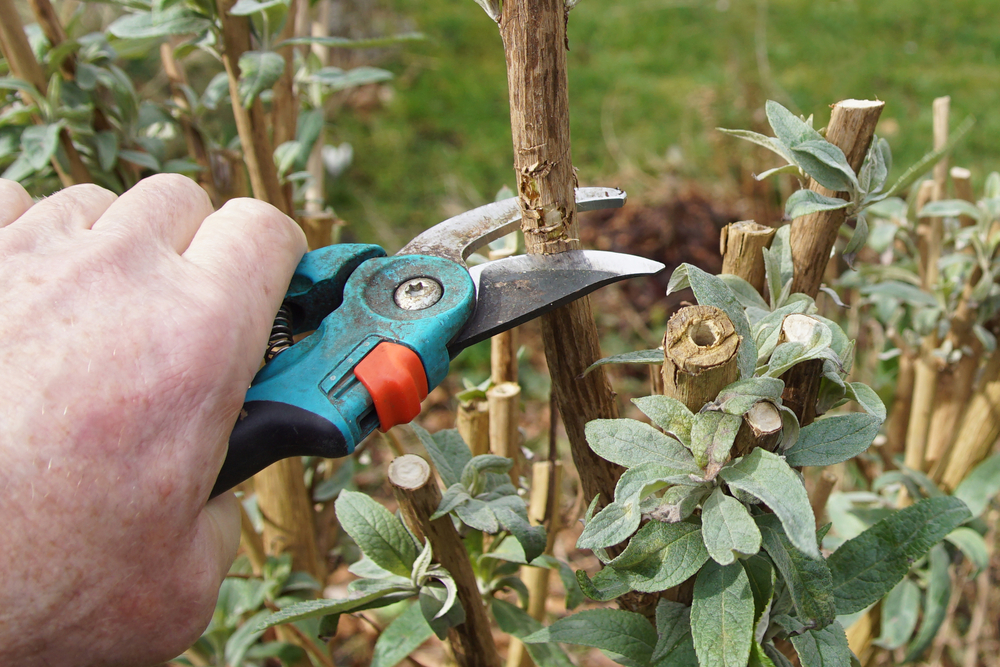
Reducing a Lilac by a 1/3, making angled cuts
Lilac bushes are a beloved addition to many gardens, with their beautiful blooms and sweet fragrance. But over time, these shrubs can become quite unruly and may need to be cut back. So, how far can you actually prune a lilac bush? While it may be tempting to cut away large portions of the plant, it's important to exercise caution. Lilacs should be pruned immediately after flowering, and only about a third of the plant should be removed at any one time. Any more than this, and you risk cutting away too much of the plant's growth for future blooms. So, if you want to keep your lilac looking its best, be patient and stick to a gradual pruning schedule.
Can I prune the Lilac in the Winter?
The winter season can be a tricky time for gardeners when it comes to pruning their plants. If you're wondering whether or not to prune your lilac during this time, it's important to consider a few things first. While it's technically possible to prune a lilac in the winter, it may not be the best idea. Lilacs bloom on old wood, meaning that the buds for next year's flowers are already formed on the branches. If you prune during the winter, you may accidentally cut off those buds and sacrifice next year's beautiful blooms. It's generally recommended to wait until after the lilac has bloomed to prune, so you can avoid any potential damage to the plant.
How to Prune the Lilac when it is Planted as a Hedge
Lilacs are lovely flowering shrubs that can be used to create a hedge. However, keeping them healthy and looking their best requires regular pruning. Timing is key when pruning lilacs, and it's important to wait until after they have finished blooming to avoid removing buds that will produce flowers the following year. When pruning, it's important to remove dead or damaged branches, as well as any that are crossing or rubbing against each other. Aim for a natural, rounded shape with a slightly narrower top than bottom to allow sunlight to reach the lower branches. With some careful attention, your lilac hedge can be a stunning addition to your landscape.
Here is a comprehensive step-by-step guide on how to prune Lilac when grown as a hedge:
Materials Needed:
- Clean, sharp pruning shears
- Loppers (for older, thicker stems)
- Gloves
- Disinfectant spray or rubbing alcohol
Steps:
- Determine Timing: Prune Lilac hedges in late spring or early summer, immediately after flowering has ended, when the shrub is still in active growth. Avoid pruning in the fall or winter, as this can lead to reduced flowering the following year.
- Sanitize Equipment: Start with clean, sharp pruning shears and loppers. Disinfect blades with rubbing alcohol or a disinfectant spray to avoid spreading disease between plants.
- Remove Dead Growth: Trim away all dead, damaged, or diseased growth throughout the hedge, taking care to snip back to healthy foliage.
- Shape the Hedge: Structural pruning should only be done when needed to maintain the hedge's desired shape and size, which is why Lilac is an excellent shrub for creating hedging. Prune the hedge by shear trimming the top and sides to create a straight and uniform surface. For a natural look, maintain a rounded shape at the top.
- Thin Out Growth: Use pruning shears or loppers to thin out stems that are straggly or crossing over other branches, to improve airflow and sunlight to the hedge's interior.
- Keep Good Wood: It's important to leave viable, healthy wood on each stem while pruning. Remove older, woody growth at the base of each stem to encourage new growth from below.
- Finalize Pruning: After trimming to shape, tidy up the hedge line with shears or loppers as needed, to produce an even surface that meets the desired height and width.
- Disinfect After Pruning: After pruning, clean and disinfect all pruning equipment.
By following these steps, you can successfully prune a Lilac hedge to maintain its health and appearance. Don't forget to do regular maintenance pruning throughout the growing season to keep the hedge looking its best.
Pruning lilacs is a great way to ensure healthy, beautiful blooms. In the UK, pruning should be done in the late winter or early spring before new growth begins. It's always important to understand the basics of pruning when working with lilac bushes - understanding when and why you are pruning these plants is vital for successful maintenance. The right tools for pruning must also be selected with caution - shears, loppers, and pruners must all be used to carefully trim away branches before cutting them at the base. Starting from the top of the shrub, identify and remove dead or diseased branches as well as crossed or rubbing branches so that new growth can occur freely from thereon. When thinning out overgrown lilacs, always start from the center and work your way outwards to leave a classic vase shape. By trimming any long or leggy branches back to a bud or two, you will help promote new side shoots. Finally, if planted as a hedge it is important to thin out wayward branches at least every other year and no more than one third of its’ length should ever be cut back in a single season. In conclusion, proper pruning can ensure plenty of beautiful blossoms each year while still maintain a healthy shrub that can bring life to your garden space!
How to Prune Climbing Vines
List by Variety
- How to Prune Actinidia
- How to Prune Akebia
- How to Prune Bougainvillea
- How to Prune Campsis
- How to Prune Celastrus
- How to Prune Chilean Glory Vine
- How to Prune Clematis Armandii
- How to Prune Clematis Montana
- How to Prune Climbing Rose
- How to Prune Hedera GoldHeart
- How to Prune Honeysuckle
- How to Prune Hydrangea Petiolaris
- How to Prune Ivy
- How to Prune Japanese Wisteria
- How to Prune Morning Glory
- How to Prune Parthenocissus
- How to Prune Persian Ivy Hedera Colchica
- How to Prune Schisandra
- How to Prune Star Jasmine
- How to Prune Sweet Peas
- How to Prune True Jasmine
- How to Prune Virginia Creeper
- How to Prune Wisteria
How to Prune Hedges
List by Variety
- How to Prune an Arborvitae Hedge
- How to Prune a Barberry Hedge
- How to Prune a Beech Hedge
- How to Prune a Boxwood Hedge
- How to Prune a Butterfly Bush Hedge
- How to Prune a Cotoneaster Hedge
- How to Prune an English Lavender Hedge
- How to Prune an Escallonia Hedge
- How to Prune an Euonymus-Hedge
- How to Prune a Firethorn Hedge
- How to Prune a Forsythia Hedge
- How to Prune a Griselinia Hedge
- How to Prune a Hawthorn Hedge
- How to Prune a Holly Hedge
- How to Prune a Hornbeam Hedge
- How to Prune a Laurel Hedge
- How to Prune a Leylandii Hedge
- How to Prune a Lilac Hedge
- How to Prune a Maple Leaf Viburnum Hedge
- How to Prune a Photinia Hedge
- How to Prune a Pink Ramanus Rose Hedge
- How to Prune a Privet Hedge
- How to Prune a Pyracantha Hedge
- How to Prune a Spirea Hedge
- How to Prune a Thuja Hedge
- How to Prune a Viburnum Hedge
- How to Prune a Western Red Cedar Hedge
- How to Prune a Yew Hedge
How to Prune Shrubs
List by Variety
- How to Prune an Abelia Shrub
- How to Prune an Abutilon
- How to Prune an Acer / Japanese-Maple
- How to Prune an Amelanchiers
- How to Prune an Apple-Tree
- How to Prune an Arbovitae Shrub
- How to Prune an Arbutus
- How to Prune an Aucuba
- How to Prune a Azalea Mollis
- How to Prune Azaleas
- How to Prune a Bay Tree Shrub
- How to Prune a Berberis Darwinii
- How to Prune Berberis Deciduous Types
- How to Prune a Boxwood Shrubs
- How to Prune a Brachyglottis Senecio
- How to Prune a Buddleia Alternifolia
- How to Prune Buddleias Butterfly Bushes
- How to Prune a Buddleja Globosa
- How to Prune a Callicarpa
- How to Prune a Camellia
- How to Prune a Caryopteris
- How to Prune a Catalpa Bignonioides Aurea
- How to Prune Ceanothus Deciduous Types
- How to Prune Ceanothus Evergreen Types
- How to Prune a Ceratostigma
- How to Prune a Chaenomeles
- How to Prune a Choisya
- How to Prune a Cistus
- How to Prune a Clematis
- How to Prune a Cornus
- How to Prune a Cotinus Royal Purple
- How to Prune a Cytisus Scoparius
- How to Prune a Exochorda x Macrantha
- How to Prune a Forsythia
- How to Prune a Hebe
- How to Prune a Hydrangeas
- How to Prune Juniper Shrubs
- How to Prune a Lavatera
- How to Prune Lilac Bushes
- How to Prune a Mugo Pine
- How to Prune Rose Bushes
- How to Prune Spirea Shrubs
- How to Prune Viburnum Shrubs
- How to Prune a Weigela
- How to Prune a Yew
How to Prune Trees
List by Variety
- How to Prune a Apple Tree
- How to Prune a Apricot Tree
- How to Prune a Ash Tree
- How to Prune a Birch Tree
- How to Prune a Cherry Tree
- How to Prune a Elm Tree
- How to Prune a Fig Tree
- How to Prune a Grape Tree
- How to Prune a Hickory Tree
- How to Prune a Maple Tree
- How to Prune a Oak Tree
- How to Prune an Olive Tree
- How to Prune a Peach Tree
- How to Prune a Pear Tree
- How to Prune a Plum Tree
- How to Prune a Poplar Tree
- How to Prune a Walnut Tree
Pests and Diseases
- How to Protect from Anthracnose
- How to Protect from Athids
- How to Protect from Apple Scab
- How to Protect from Armillaria Root Rot
- How to Protect from Bagworms
- How to Protect from Black Knot
- How to Protect from Black Rot
- How to Protect from Black Spot
- How to Protect from Botryosphaeria Dieback
- How to Protect from Botrytis Blight
- How to Protect from Brown Rot
- How to Protect from Canker Diseases
- How to Protect from Caterpillars
- How to Protect from Cedar Apple Rust
- How to Protect from Clematis Wilt
- How to Protect from Codling Moths
- How to Protect from Crown Gall
- How to Protect from Crown Rot
- How to Protect from Downy Mildew
- How to Protect from Dutch Elm Disease
- How to Protect from Elm Bark Beetle
- How to Protect from Elm Leaf Beetle
- How to Protect from Fire Blight
- How to Protect from the Gypsy Moth Caterpillars
- How to Protect from Honey Fungus
- How to Protect from Japanese Beetles
- How to Protect from Juniper Scale
- How to Protect from Lace Bugs
- How to Protect from Lacewings
- How to Protect from Leaf Miners
- How to Protect from Leaf Spot Diseases
- How to Protect from Mealybugs
- How to Protect from Needle Blight
- How to Protect from Oak Borers
- How to Protect from Oak Wilt
- How to Protect from Olive Knot Disease
- How to Protect from Peach Leaf Curl
- How to Protect from Peach Scab
- How to Protect from Pear Psylla
- How to Protect from Pear Rust
- How to Protect from Pear Scab
- How to Protect from Perennial Canker
- How to Protect from Pine Sawflies
- How to Protect from Pine Shoot Beetle
- How to Protect from Plum Fruit Moth
- How to Protect from Plum Pox Virus
- How to Protect from Poplar Borer
- How to Protect from Powdery Mildew
- How to Protect from Root Rot
- How to Protect from Rose Rosette Disease
- How to Protect from Rust Fungi
- How to Protect from Scale Insects
- How to Protect from Silver Leaf Disease
- How to Protect from Slugs
- How to Protect from Spider Mites
- How to Protect from Twig Blight
- How to Protect from Verticillium Wilt
- How to Protect from Viburnum Beetle
- How to Protect from Vine Weevil
- How to Protect from Walnut Blight
- How to Protect from Walnut Husk Fly
- How to Protect from Walnut Scale
- How to Protect from Western Flower Thrips
- How to Protect from Whiteflies
Popular Pruning Sections

General Pruning
General Information on How to Prune your Garden

Pruning Shrubs
The Most Read Shrubs to Prune
- How to Prune Hydrangeas
- How to Prune a Rose Bush
- How to Prune Azaleas
- How to Prune a Lilac Bush
- How to Prune Buddleias - Butterfly Bushes
- How to Prune Forsythia
- How to Prune Weigela
- How to Prune Hebe
- How to Prune Camellia

Pruning Trees and Climbers
The Most Read Trees to Prune
- How to Prune Apple Trees
- Pruning Plum Trees
- Pruning Cherry Trees
- Pruning Olive Trees
- How to Prune a Grape Vine
- Acer Pruning | Pruning Japanese Maple
- How to Prune a Fig Tree
- Pruning Peach Trees
- Pruning Pear Trees
- How to Prune a Plum Tree




